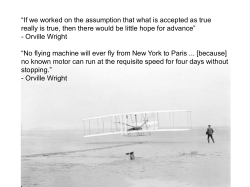
EENG 331 - Electromagnetics II Department: Program Name:
EENG 331 - Electromagnetics II Department: Electrical and Electronic Engineering Program Name: Electrrical and Electronic Engineering Course Number: Credits: EENG 331 4 Required Course Prerequisite(s): EENG 232 Catalog Description: Program Code: 27 Elective Course Electromagnetic induction; Faraday's and Lenz's laws; transformer and motional electromotive force; induction heating; transformer; displacement current; time-varying fields; Maxwell's equations; wave equations; time-harmonic fields; complex phasors; scalar and vector potential functions; plane waves in vacuum; plane waves in dielectrics and conductors; polarization; skin effect; electromagnetic energy and power; Poynting's theorem; reflection and refraction of plane waves at dielectric interfaces; Snell's laws; Fresnel formulas; critical angle; total internal reflection; total transmission; Brewster's angle; standing waves; transmission line theory; TEM waves; transmission line parameters; lossy and lossless lines; matching of transmission lines to their loads. Course Web Page: http://opencourses.emu.edu.tr/course/view.php?id=8 Textbook(s): 1) Elements of Electromagnetics, Matthew N.O.Sadiku, Oxford University Press, 2007 Indicative Basic Reading List : 1. Fundamentals of Engineering Electromagnetics, David K. Cheng, Addison Wesley, 1993 2. Engineering Electromagnetics, William H. Hayt, McGraw-Hill 3. Electromagnetics, John D. Kraus and Keith R. Carver, McGraw-Hill Course Outline: Week 1: Familiarization with the Course and the teaching and learning environment Week 2 -5: Time- Varying Fields and Maxwell's Equations: Electromagnetic induction; Faraday's and Len's laws; Transformer and motional electromotive force displacement current; Time-varying fields; Maxwell's equations; Wave equations; Time-harmonic fields; Complex phasors; Scalar and vector potential functions. Week 6-8: The Uniform Plane Wave: Complex phasors; Scalar and vector potential functions. Plane waves in vacuum; Plane waves in dielectrics and conductors; polarization; Skin effect; Electromagnetic energy and power; Poynting's vector; Poynting's theorem. Week 9-10: Mid-Term Examination Week 11-13: Reflection and Refraction of Plane Waves at Dielectric Interface: Snell's laws; Fresnel formulas; Critical angle; Total internal reflection; Total transmission; Brewster's angle; standing waves. Week 13-14: Transmission Lines: Transmission line equations; TEM waves; Transmission line parameters; -Lossy and lossless lines; Matching of transmission lines to their loads. Week 15: Final Examinations Course Learning Outcomes: a) On successful completion of this course, Students will become more familiar with fundamental theory of electrodynamics. Students will learn the basic applications of Maxwell's equations. Students will learn basic properties of electromagnetic plane waves. Students will learn basic transmission line theory. Students will learn basic impedance matching concepts. b) On successful completion of this course, all students will have developed their appreciation of and respect for values and attitudes regarding, carrying out directed private study using textbooks and other provided resources. Class Schedule: Tutorial Schedule: 1 hr of tutorial per week 4 hrs of lectures per week Method No Percentage Midterm Exam 1 40% Quiz(s) 3 15 % Assessment Homework(s) 4 5% Final Examination 1 40% NG Policy: Any student who has an overall failing grade, and who has failed to attend the lectures regularly (min 80%) will be given the NG grade. Make-Up Policy: Students missing an examination should provide a valid excuse within three days following the examination they missed. No separate make-up exams are administered for midterm and final exams. Re-sit examinations are administered as make-up examinations, instead. Contribution of Course to Criterion 5 Credit Hours for: Mathematics & Basic Science : 0 Engineering Design : 4 General Education : 0 Relationship of Course to Program Outcomes The course has been designed to contribute to the following program outcomes: (a) An ability to apply knowledge of mathematics, science, and engineering. (e) An ability to identify, formulate and solve engineering problems. Prepared by: Rasime Uyguroglu Date Prepared: 14 October 2014
© Copyright 2025





















